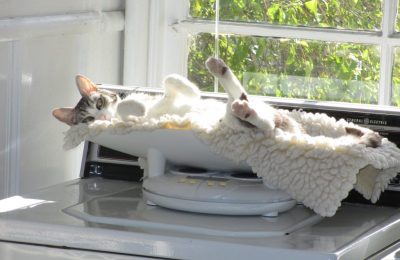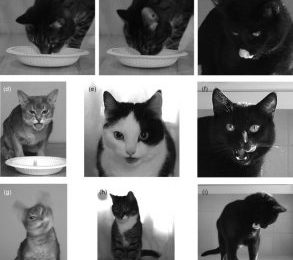New research looks at what’s really going on with their faces.
Although cats have lived with humans for thousands of years now, it hasn’t been until the last 150 years or so that humans started selectively breeding cats. Cats with certain physical features were chosen for breeding, resulting in the myriad of cat breeds that we see today. Only around 5% of domestic cats are purebred, meaning that most cats are doing just fine without human meddling. But purebred cats get a disproportionate amount of attention, perhaps because we have selected them for particularly stunning coat colors or even human-like features (such as round faces).
Cats can have different head shapes
Some animals are selected for different head shapes, either dolichocephalic (with a long head), mesocephalic (of medium proportions) or brachycephalic (with a broad skull, at least 80% as wide as long). Humans seem to be particularly drawn to brachycephalic animals, with breeds of dogs, cats, horses and even rabbits being bred to have the short, broad face. To an extent, the round faces, prominent eyes, and short snouts of these animals appeal to humans because they fit into what is called “baby schema” or “kinderschema” – meaning they have infantile features that elicit a caregiving response in humans.
Unfortunately, a growing body of research suggests that brachycephalic animals of any species at a high risk of respiratory, dental and eye problems. They are prone to malformed tear ducts, their short noses make breathing difficult, and the broad head makes labor difficult, with a high rate of stillborn young.
How have breeds changed?
The features of some breeds have become more extreme over time. If you look at Persians in the late 1800s and early 1900s, they looked like a much different cat. (Photos via Wikipedia)


But breeding choices changed, and breed standards (the ideal example of a breed, often as defined by breed clubs and fanciers’ associations) also changed over time. And not always for the better.
New research
A recent study, “Facial conformation characteristics in Persian and Exotic Shorthair cats,” examined just how diverse the features are among two breeds of cats, Persians (PER) and Exotic Shorthairs (EXO, essentially, a short hair Persian).
The researchers began by physically examining and also analyzing photos of several exemplar members of the two breeds (64 Persians and 12 Exotic Shorthairs) and then comparing their facial features to those of domestic short and long-haired cats (i.e., mutts, your average moggy). Much of the research took place at five international cat shows, with the moggies examined at a veterinary hospital.
Through the photographs, the researchers (board-certified veterinary surgeons) looked at how pinched cats’ nostrils were (known as stenosis), the size of each cat’s nose leather, and the position of each cat’s nose relative to their eyes.

At the cat shows, the researchers also surveyed owners of PER and EXO cats about their cat’s health, and reviewed the comments that the show judges left about the cats’ individual appearances, specifically related to their facial features.
Results
The veterinary exam on the show cats found that 83% of them had eye discharge/staining, and 32% had a condition called entropion, where the eyelids are slightly inverted, causing eyelashes to irritate the cornea. None of the DSH/DLH cats had either issue. Most of the PER/EXO cats (95%) had smaller than normal nose leather, and 86% had “stenotic nares” (meaning narrow nostrils). None of the DSH/DLH cats had either feature present.

Finally, 93% of the PER/EXO cats had noses that were positioned such that the top of their nose leather was higher than the bottom eyelid. All of the DSH/DLH cats had a nose that was positioned below their eyes.

Few owners (<8%) of the PER/EXO cats reported health problems with their cats, and only 33% reported their cats having eye discharge.
The judges also seemed impressed with the show cat specimens, showing a preference for the more extremely bred cats. Their comments included “excellent small nose” or “nose a little long” and “head not rounded enough.” No judges commented on the eye staining, entropion or overly narrow nostrils, despite the fact that breed standards for cat shows are supposed to consider entropion and narrow nostrils to be a “general fault.” For example, the breed standards state that “nose leather must be wide, nostrils well open.”
Overall, the features of the PER/EXO cats had more diversity, with a range of nose placements, and nose and nostril sizes. But overwhelmingly, the veterinarians found them to have issues that might compromise their health and welfare, even if cat owners and cat judges did not necessarily agree.
What can we conclude?
There is an increasing recognition that breeding animals for brachycephalism is problematic. Several studies have clearly demonstrated increased risk of health problems in these breeds (the website Vets Against Brachycephalism has links to a whole suite of published research). I recently blogged about other current research that suggests that the brachycephalic features of cats may impact our ability to recognize their facial signals.

To be clear, these animals didn’t just “end up” this way. Extreme physical features were selected for generation after generation. All purebreds, by definition, are inbred. Through this intense selection for physical features, breeders have also limited the gene pool, increasing the risk of the expression of genetic mutations across generations (such as Polycystic kidney disease, which Persians are prone to developing).
What can you do? You can choose not to buy animals with extreme brachycephalic features. If you want a purebred animal, choose a breeder who selects for health and a more moderate appearance. Avoid using photos of brachycephalic animals to promote animal events. And, if you have a brachycephalic animal, be sure to work closely with your veterinarian to monitor their health and minimize the risks that their head shape and genetics may make them prone to.
Reference
Anagrius, K. L., Dimopoulou, M., Moe, A. N., Petterson, A., & Ljungvall, I. (2021). Facial conformation characteristics in Persian and Exotic Shorthair cats. Journal of Feline Medicine and Surgery, 1098612X21997631.


